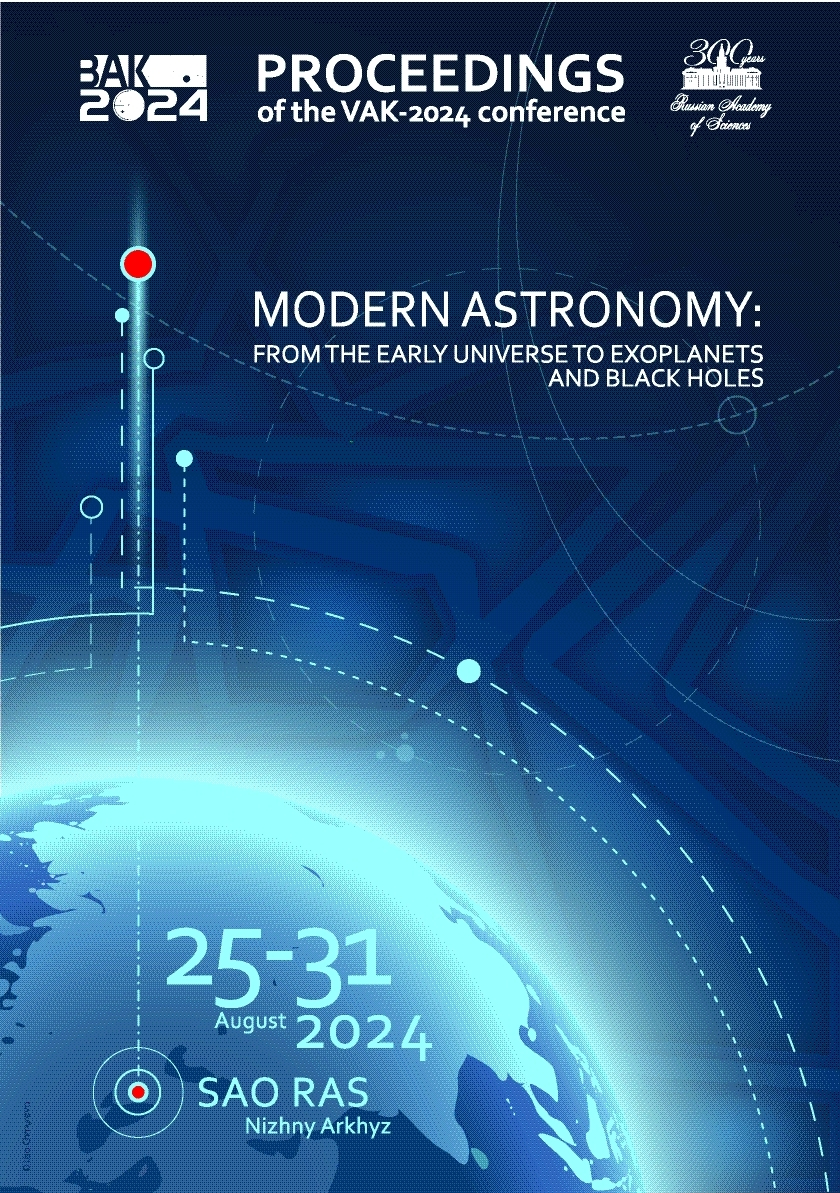Kazan Federal University
Institute for Nuclear Research of the Russian Academy of Sciences
Moscow Institute of Physics and Technology
Astrophysics Group, Cavendish Laboratory, University of Cambridge
УДК 53 Физика
УДК 520 Инструменты, приборы и методы астрономических наблюдений, измерений и анализа
УДК 521 Теоретическая астрономия. Небесная механика. Фундаментальная астрономия. Теория динамической и позиционной астрономии
УДК 523 Солнечная система
УДК 524 Звезды и звездные системы. Вселенная Солнце и Солнечная система
УДК 52-1 Метод изучения
УДК 52-6 Излучение и связанные с ним процессы
ГРНТИ 41.00 АСТРОНОМИЯ
ГРНТИ 29.35 Радиофизика. Физические основы электроники
ГРНТИ 29.31 Оптика
ГРНТИ 29.33 Лазерная физика
ГРНТИ 29.27 Физика плазмы
ГРНТИ 29.05 Физика элементарных частиц. Теория полей. Физика высоких энергий
ОКСО 03.06.01 Физика и астрономия
ОКСО 03.05.01 Астрономия
ОКСО 03.04.03 Радиофизика
ББК 2 ЕСТЕСТВЕННЫЕ НАУКИ
ББК 223 Физика
ТБК 614 Астрономия
ТБК 6135 Оптика
BISAC SCI004000 Astronomy
BISAC SCI005000 Physics / Astrophysics
We present a study of the multiwavelength variability of the blazar Ton 599 based on the radio-to--ray data covering the period of 1997-2024. The data are represented by the 1-22 GHz measurements from the SAO RAS RATAN-600 radio telescope, the 5 and 8 GHz data from the IAA RAS RT-32 telescopes, and the 37 GHz data from the RT-22 telescope of CrAO RAS. The optical measurements in the R-band were collected with the SAO RAS 1-m Zeiss-1000 and 0.5-m AS-500/2, SPbSU 0.4-m LX-200, and CrAO RAS 0.7-m AZT-8 telescopes. We also used the archive data at 230 GHz from the Submillimeter Array (SMA) and the -ray data in the 0.1-100 GeV band from the Fermi-LAT point source catalogue 4FGL-DR2. The blazar exhibits extreme variability properties with a variability index varying from 0.47 to 0.98. A characteristic feature of the light curves is the presence of double and triple flares with different spectral properties. A significant correlation ($\geq 2\sigma$) between the radio, optical, and -ray bands is found with time delays from 0 to 365 days. The L-S periodograms show the significant peaks ($>3\sigma$) related to periods of 2.4-3.9 years, which coincides with global oscillations obtained earlier on the time scale of 1987-2010.
galaxies: active; quasars: individual (Ton 599); radiation mechanisms: non-thermal; methods: data analysis, statistical
1. Abdollahi S., Ajello M., Baldini L., et al., 2023, ApJ Supplement Series, 265, 2, id.31
2. Aller M., Aller H., and Hughes P., 1992, ApJ, 399, p. 16
3. Gurwell M., Peck A., Hostler S., et al., 2007, ASP Conf. Ser., 375, p. 234
4. Hewett P. and Wild V., 2010, MNRAS, 405, p. 2302
5. Kang S., Lee S., Hodgson J., et al., 2021, A&A, 651, id. A74
6. Liu B. and Liu X., 2014, Ap&SS, 352, p. 215
7. Lomb N., 1976, Ap&SS, 39, p. 447
8. Manzoor A., Shah Z., Sahayanathan S., et al., 2024, MNRAS, 529, p. 1356
9. Mukherjee R. and VERITAS Collaboration , 2017, The Astronomer's Telegram, 11075
10. Patel S. and Chitnis V., 2020, MNRAS, 492, p. 72
11. Prince R. 2019, ApJ, 871, id. 101
12. Ramakrishnan V., Leon-Tavares J., Rastorgueva-Foi E., et al., 2014, MNRAS, 445, p. 1636
13. Scargle J., 1982, ApJ, 263, p. 835
14. Wang J., An T., Baan W., and Lu X., 2014, MNRAS, 443, p. 58








